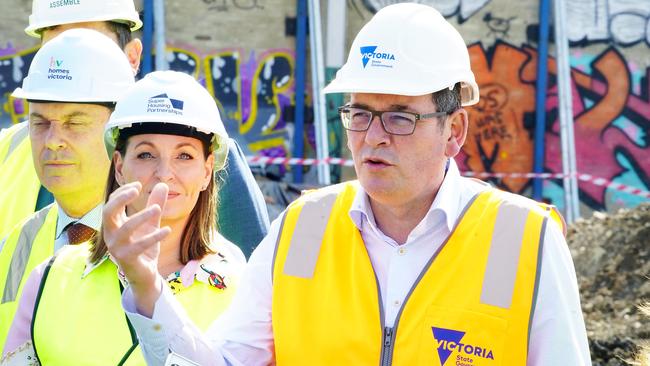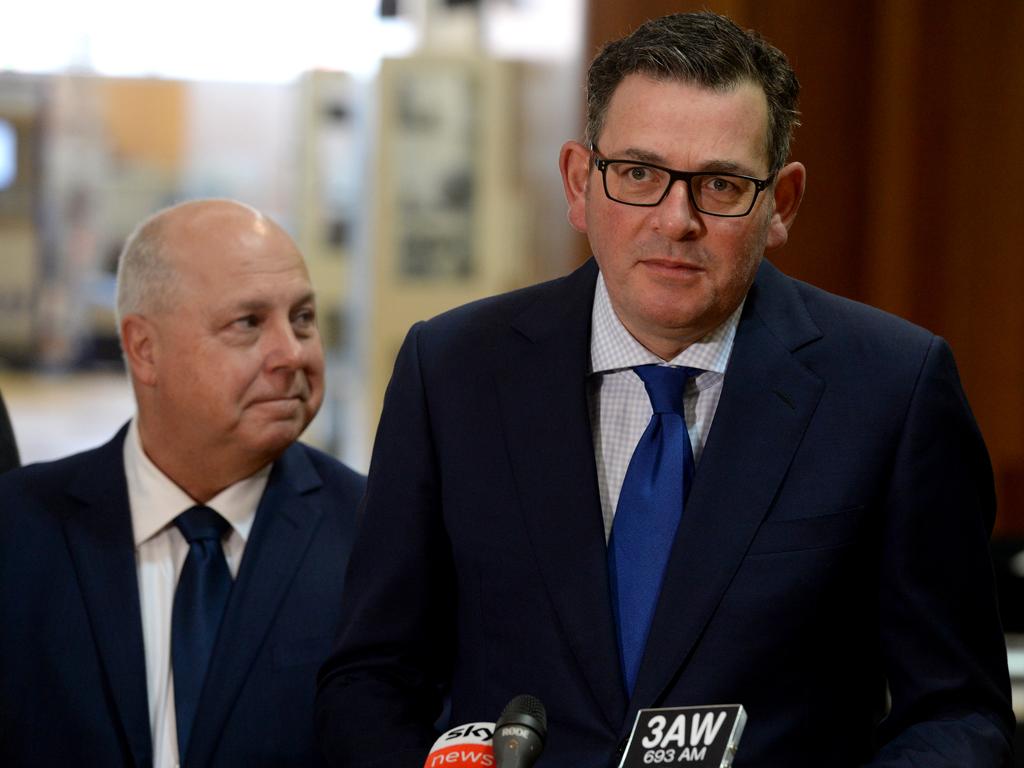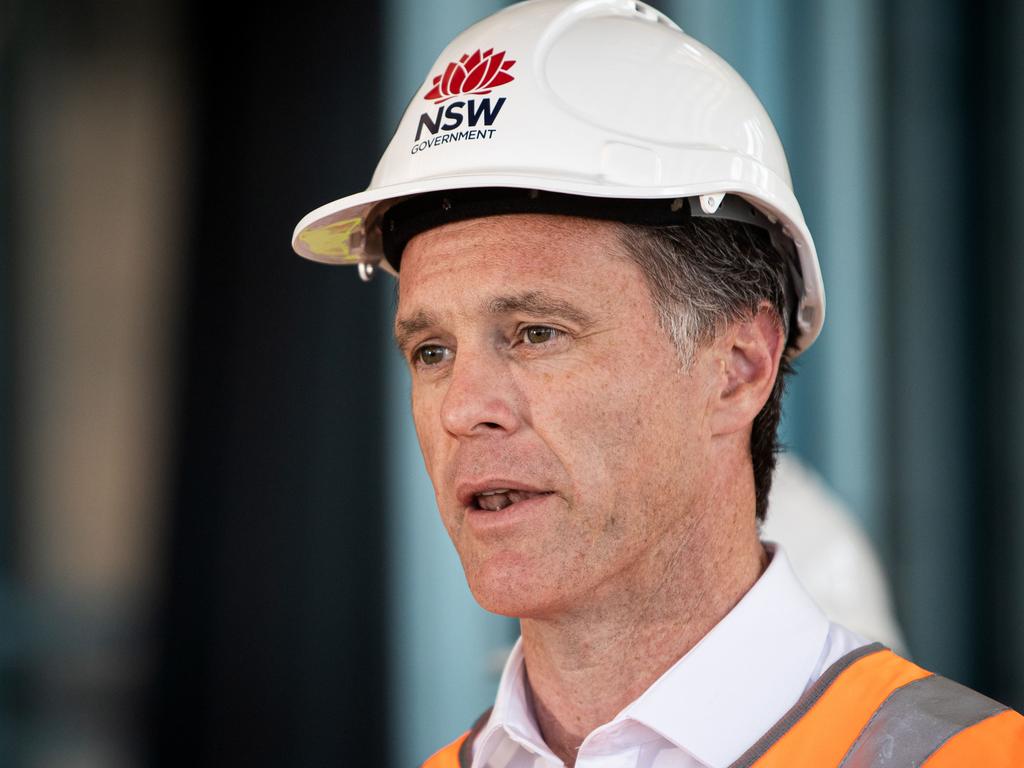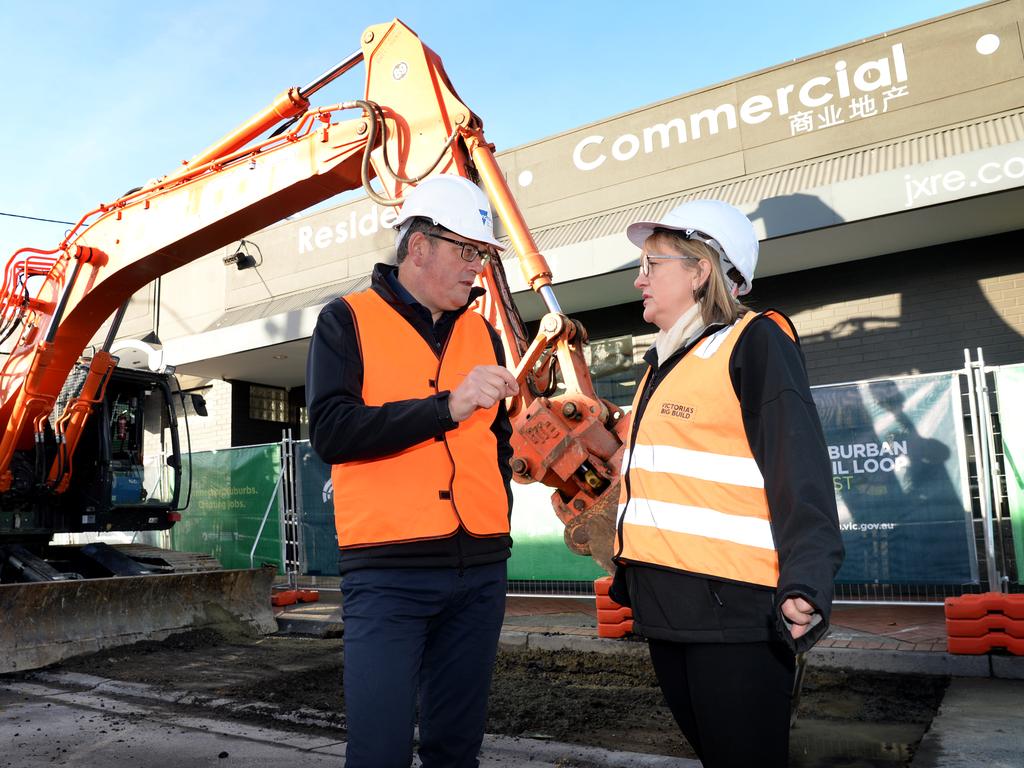Mega projects keep Victorian budget in deficit in an economy driven by public works and people power


The state’s latest budget papers show that gross debt to revenue is estimated to be almost 200 per cent this financial year and increase to 225 per cent over four years.
Deficits and higher borrowing rates will see the state’s debt service burden, that is interest costs to revenue, rise to 8.1 per cent by 2027; the ratio was half of that before the pandemic, which cost Victoria’s taxpayers more than $30bn in Covid debt.
Labor’s mega projects, with their abysmal cost control by Czarina Jacinta, are keeping the budget in deficit. Cancelling the King’s Games won’t save taxpayers any money.
Over the coming four years, government infrastructure investment will average $20bn a year; in the three years ahead of the pandemic, Labor’s capital works spending was running at an annual $12bn.
Victoria’s economy is being driven by public works and people power, literally.
The state’s population increased by a nation-leading 161,700 in the 12 months to the end of March, with migration accounting for 85 per cent of that growth.
The surge of international students and temporary workers is boosting export earnings, namely higher education fees and foreigners’ living costs, pushing up rental costs and keeping employment humming.
In its Coast to Coast report this week, Westpac notes the Victorian state economy “has slowed abruptly since the start of the year, led by flatlining consumer demand”.
Still, the number of people employed in Victoria rose by a very strong 3.8 per cent over the past year, with the jobless rate at 3.5 per cent, the lowest among the states. Looking ahead, the bank’s economists say the state’s “prospects are mixed”.
Victorian households are digging into their savings at a greater rate than elsewhere.
“Victorian consumers will remain under intense pressure but surging population growth should provide an offset,” Westpac said.
Yet the state remains vulnerable to shocks, the same ones that affect the broader economy that is decarbonising and exposed to financial volatility.
Budget watcher Stephen Anthony looks back to the start of the century, following the fall of the bulldozing Jeff Kennett, to the even-headed days of Labor’s Steve Bracks and John Brumby.
Take those baselines and compare it to the era of Dan Andrews since 2014 and the picture is clear: way more debt, a higher tax take to feed the appetites of big government, a squeeze on household finances and the crowding out of business investment.
The Macroeconomics Advisory managing director says the state’s construction and population boom is a “Ponzi scheme”.
The accumulation of deficits and the rising interest burden is drawing the eye of the debt police.
Victoria’s May budget stiffed property owners, private schools and employers with higher taxes, projects were put on ice and spending was sliced in some areas
Credit agency Moody’s says “Victoria’s stand-alone credit profile has weakened in recent years and will continue to do so as sustained infrastructure spending continues to drive debt higher”.
“Despite the underlying strength of the Victorian and broader Australian economy, the state’s debt burden is unlikely to stabilise before the end of the fiscal year ending in June 2028,” the agency said in a credit analysis a fortnight ago.
Based on the state’s revised debt projections, Moody’s now expects Victoria’s outstanding debt will exceed $237.4bn by 2027, reflecting a 77 per cent increase over five years.
“As a result, this rapid (and prolonged) growth in debt amid higher interest rates will raise borrowing costs and weaken debt affordability over time, limiting headroom under rating tolerances,” meaning Allan may not be able to borrow more at the current Aa2 rating.
The fiscal fun times are drawing to a close for Victoria and its new Premier.






Jacinta Allan takes full custody of a faltering economy and the burden of Victoria’s swelling debt, amassed in a joint enterprise with her predecessor over nine years of busy borrowing for Labor’s Big Build.